What Are Motorcycle Crash Bars?
Motorcycle crash bars are protective metal structures installed on motorcycles. They are designed to safeguard both the rider and the motorcycle during accidents or falls. These bars create a buffer zone around critical components of the bike, such as the engine, fuel tank, and radiator.
Crash bars are typically attached to the frame of the motorcycle. They extend outward, ensuring that the bike does not lay completely flat on the ground if it tips over. This reduces damage to expensive parts and keeps the bike more stable in such situations.
One of their primary purposes is to protect the rider’s legs. In the event of a fall, crash bars prevent the motorcycle from pinning the rider’s legs to the ground. This reduces the risk of serious injuries.
Motorcycle crash bars are also helpful for adventure riders. They provide additional mounting points for accessories, such as auxiliary lights or bags. Moreover, they give the motorcycle a rugged and adventurous appearance.
Crash bars come in different designs and materials to suit various bikes and riding conditions. Choosing the right crash bars can significantly impact the safety and functionality of your motorcycle.
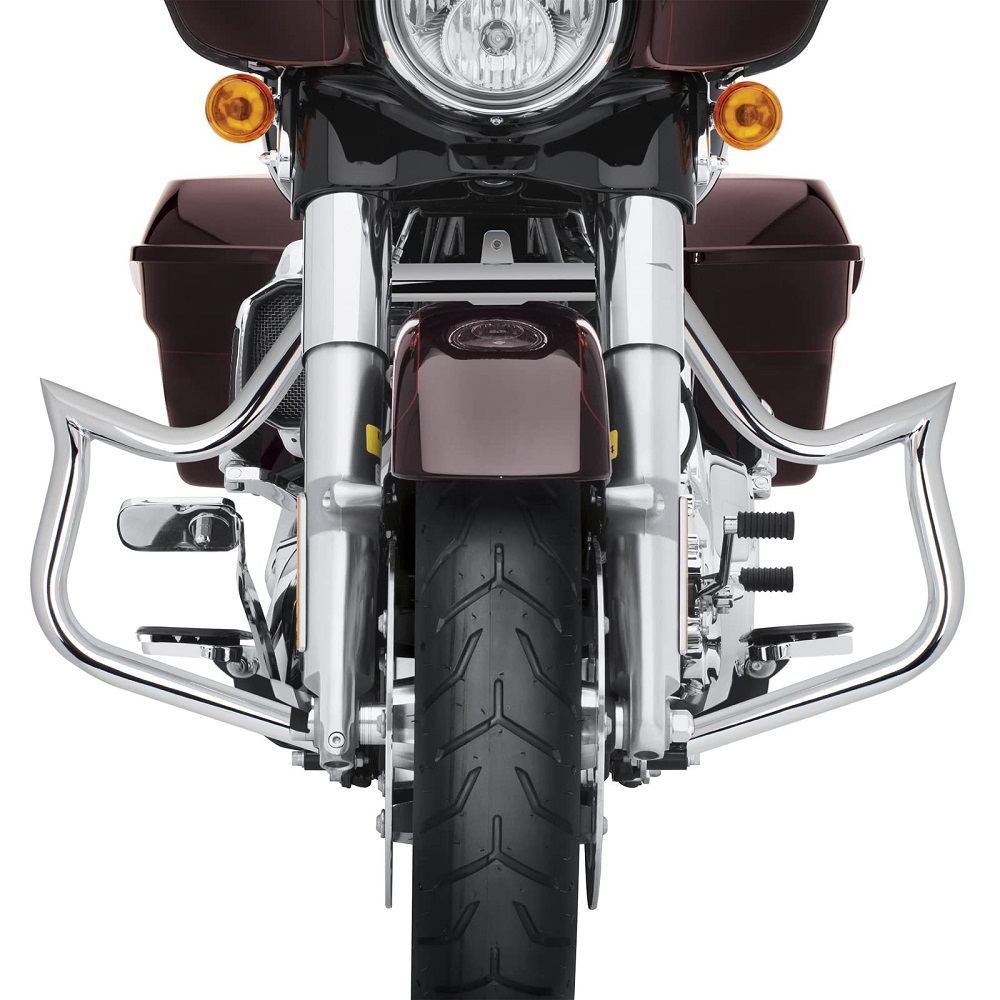
Benefits of Installing Crash Bars on Your Motorcycle
Installing motorcycle crash bars provides numerous benefits for both the rider and the bike. Here are the key advantages:
- Enhanced Rider Safety: Crash bars protect your legs during accidents or tip-overs. They prevent the motorcycle from pinning your legs to the ground, significantly reducing the risk of serious injuries.
- Protect Critical Components: They safeguard essential parts, such as the engine, fuel tank, and radiator. By creating a barrier, crash bars minimize damage to these components in case of falls.
- Improved Stability: Crash bars prevent the motorcycle from lying completely flat when it tips over. This added stability often makes it easier to lift the bike back up.
- Reduced Repair Costs: They help avoid extensive damage to expensive parts, lowering repair costs in the long run.
- Additional Mounting Points: Many riders use crash bars for mounting accessories like auxiliary lights, tool kits, or luggage. This feature is particularly useful for adventure riders.
- Aesthetic Appeal: Crash bars add a rugged look to your motorcycle, making it appear more adventure-ready and robust.
- Increased Resale Value: A well-protected and maintained motorcycle retains its value better. Crash bars keep your bike in good condition even after minor falls.
Investing in quality motorcycle crash bars can make your rides safer and more enjoyable. Choose bars that match your bike’s design and riding needs for the best results.
Different Types of Crash Bars
Motorcycle crash bars come in various designs to suit different bikes and riding styles. Choosing the right type depends on your motorcycle, your preferences, and the conditions you plan to ride in. Here are the main types of motorcycle crash bars:
- Standard Crash Bars
- These are the most common and basic type.
- They are designed to protect the engine and other vital parts.
- Ideal for street bikes and everyday riding.
- Adventure Crash Bars
- Specifically designed for adventure and dual-sport motorcycles.
- Provide extended protection for the fuel tank and radiator.
- Often feature added mounting points for accessories.
- Full Wraparound Crash Bars
- Protects both the engine and rider’s legs effectively.
- Offers enhanced stability for the motorcycle during falls.
- Great for heavier bikes and long-distance riders.
- Highway Bars
- A popular choice for cruisers and touring motorcycles.
- Often positioned wider, allowing riders to rest their feet while riding.
- Combines comfort with protection.
- Custom Crash Bars
- Designed specifically for individual motorcycle models.
- Tailored to match the aesthetic and functional needs of the bike.
- Provides a unique look while ensuring safety.
- Skid Plate Integrated Crash Bars
- Combines crash bars with a skid plate.
- Protects the underbody and engine from debris or off-road obstacles.
- Perfect for riders who frequent rugged terrains.
Some riders even opt to mix and match types to achieve their desired balance of protection and style. Choosing the most suitable motorcycle crash bars is critical for ensuring maximum safety and bike performance. Be sure to consider your riding needs before making a decision.
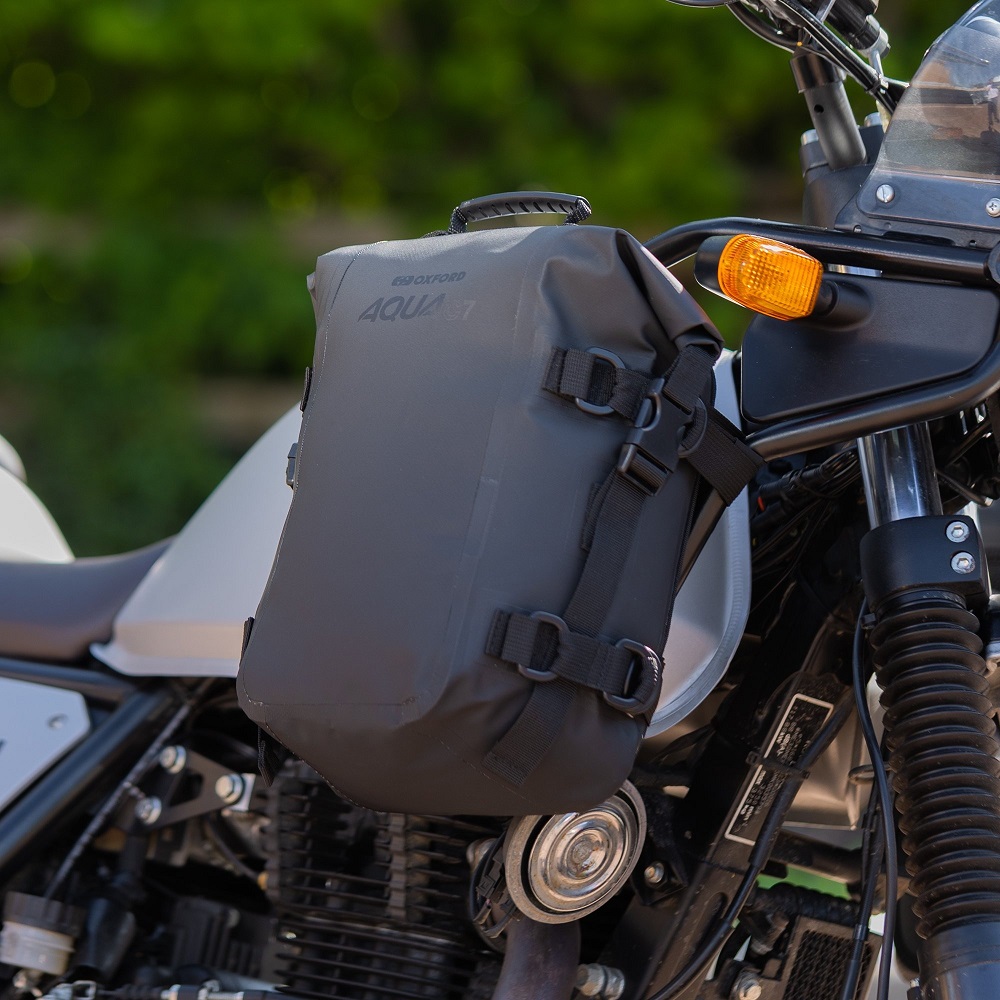
Materials Used in Crash Bars
The materials used in motorcycle crash bars play a crucial role in their durability and functionality. High-quality materials ensure effective protection for both the rider and the motorcycle. Here are the most common materials used for manufacturing motorcycle crash bars:
1. Stainless Steel
- Stainless steel is one of the most popular choices for crash bars.
- It is highly durable and resistant to rust and corrosion.
- Stainless steel bars withstand impact well, ensuring long-lasting protection.
- Their polished finish also enhances the bike’s overall appearance.
2. Mild Steel
- Mild steel is another common material used in crash bars.
- It provides excellent strength to withstand impacts.
- Unlike stainless steel, mild steel may require additional coating to prevent rust.
- It is often more affordable than stainless steel.
3. Aluminum
- Aluminum crash bars are lightweight and resist corrosion naturally.
- These bars are ideal for off-road motorcycles to reduce overall weight.
- However, aluminum is not as strong as steel and may bend under heavy impacts.
4. Chromium-Molybdenum Steel (Chromoly)
- Chromoly is a premium grade of steel known for exceptional strength and durability.
- It is lightweight but offers high resistance to stress and impacts.
- Chromoly crash bars are more expensive but a worthwhile investment for high-performance bikes.
5. Titanium
- Titanium offers the best strength-to-weight ratio among materials used for crash bars.
- It is rust-resistant and incredibly durable but significantly more expensive.
- Titanium crash bars are often used in high-end or custom motorcycles.
Factors to Consider When Selecting the Material
- Weight: Choose lightweight materials like aluminum or titanium for better handling.
- Strength: For heavy-duty protection, opt for steel or chromoly options.
- Corrosion Resistance: Materials like stainless steel and titanium require less maintenance and last longer.
- Cost: Consider your budget, as materials like titanium are more expensive.
Selecting the right material for your motorcycle crash bars ensures proper safety, durability, and style. Always focus on the balance between weight, strength, and cost to meet your riding needs.
How to Choose the Right Crash Bars for Your Motorcycle
Choosing the right motorcycle crash bars is essential for safety and functionality. The decision should be based on your bike type, riding style, and the protection level needed. Here are some key factors to consider:
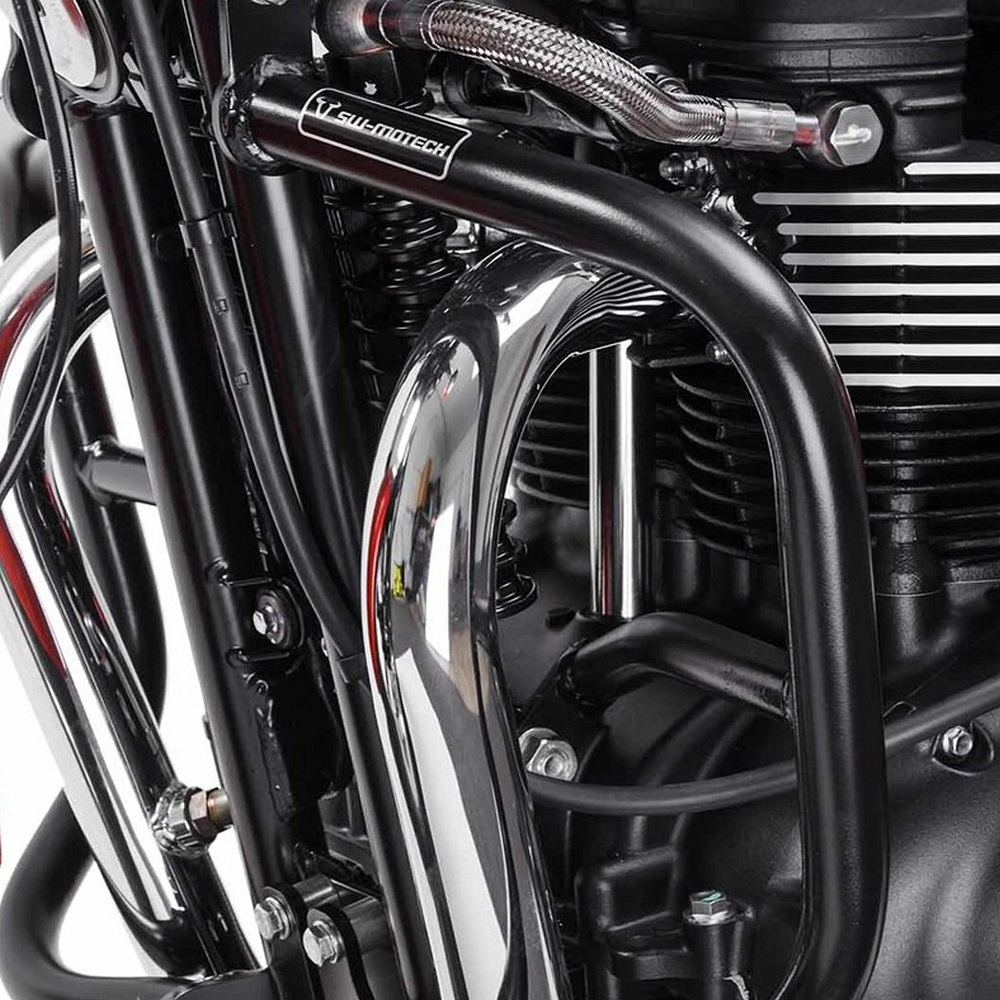
1. Compatibility with Your Motorcycle
- Ensure the crash bars are designed specifically for your bike model.
- Check the manufacturer’s specifications for fit and compatibility.
- Some bikes might require custom-designed crash bars for an optimal fit.
2. Material Selection
- Choose durable materials like stainless steel or chromoly for heavy-duty protection.
- Opt for aluminum or titanium for lightweight and rust-resistant options.
- Consider mild steel if you’re looking for a more budget-friendly choice.
3. Type and Design of Crash Bars
- Standard Crash Bars are ideal for everyday ride protection on street bikes.
- Adventure Crash Bars suit off-road bikes and are great for rugged terrains.
- Full Wraparound Bars are excellent for complete protection and stability.
- Highway Bars offer both protection and footrest functionality for cruisers.
4. Purpose of Crash Bars
- Define whether your primary need is rider safety or bike protection.
- For off-road riders, prioritize protection for the engine and accessories.
- For city riders, basic crash bars might suffice to guard against tip-overs.
5. Aesthetic Appeal
- Pick crash bars that complement your bike’s design.
- Ensure they add to the bike’s rugged or sleek aesthetics as per your preference.
6. Budget Constraints
- High-quality materials may cost more but ensure long-lasting protection.
- Weigh the benefits of premium materials like titanium against affordability.
Tips for Shopping Crash Bars
- Read reviews from fellow riders using the same type of motorcycle.
- Consult local motorcycle shops for recommendations or customization.
- Compare crash bar features and prices thoroughly before buying.
Selecting the right crash bars enhances both the safety and performance of your motorcycle. Take your time to evaluate all aspects to ensure the best choice for your riding needs.
Installation Tips for Crash Bars
Installing motorcycle crash bars requires careful planning and precise execution. Proper installation ensures safety and optimal performance. Follow these tips to install crash bars on your motorcycle effectively:
- Gather the Necessary Tools
- Collect tools like a socket wrench, spanner, and screwdrivers.
- Use the instruction manual for specific tool requirements.
- Read the Manufacturer’s Instructions
- Review the installation guide provided with the crash bars.
- Confirm the compatibility of the crash bars with your motorcycle model.
- Prepare Your Motorcycle
- Place your motorcycle on an even surface for stability.
- Use a center stand or paddock stand for additional support.
- Remove Existing Parts if Necessary
- Detach any parts that might block the installation, such as body panels.
- Keep screws and bolts in a safe place for later use.
- Attach the Crash Bars to the Motorcycle Frame
- Align the crash bars with the pre-drilled mounting points on the frame.
- Secure the bars using the bolts provided by the manufacturer.
- Tighten Bolts Correctly
- Use a torque wrench to tighten bolts to the specified torque setting.
- Avoid over-tightening to prevent damage to the bolts or the bike frame.
- Check Alignment
- Ensure the crash bars are symmetrical and properly aligned on both sides of the motorcycle.
- Adjust the bars if necessary to avoid obstructing other components.
- Test Stability
- Gently push and pull on the installed crash bars to verify they are secure.
- Check if there is any movement or loosening of the bolts.
- Reattach Removed Parts
- Reinstall any body panels or other parts removed during installation.
- Double-check that all parts are securely in place.
- Perform a Test Ride
- Take a short and safe test ride to ensure the crash bars do not interfere with handling.
- Listen for any unusual noises or vibrations coming from the crash bars.
Additional Tips:
- If you are unsure about the process, seek help from a professional mechanic.
- Regularly inspect the crash bars post-installation to ensure they remain secure.
By following these steps, you can ensure that your motorcycle crash bars are installed correctly and will provide reliable protection during your rides.
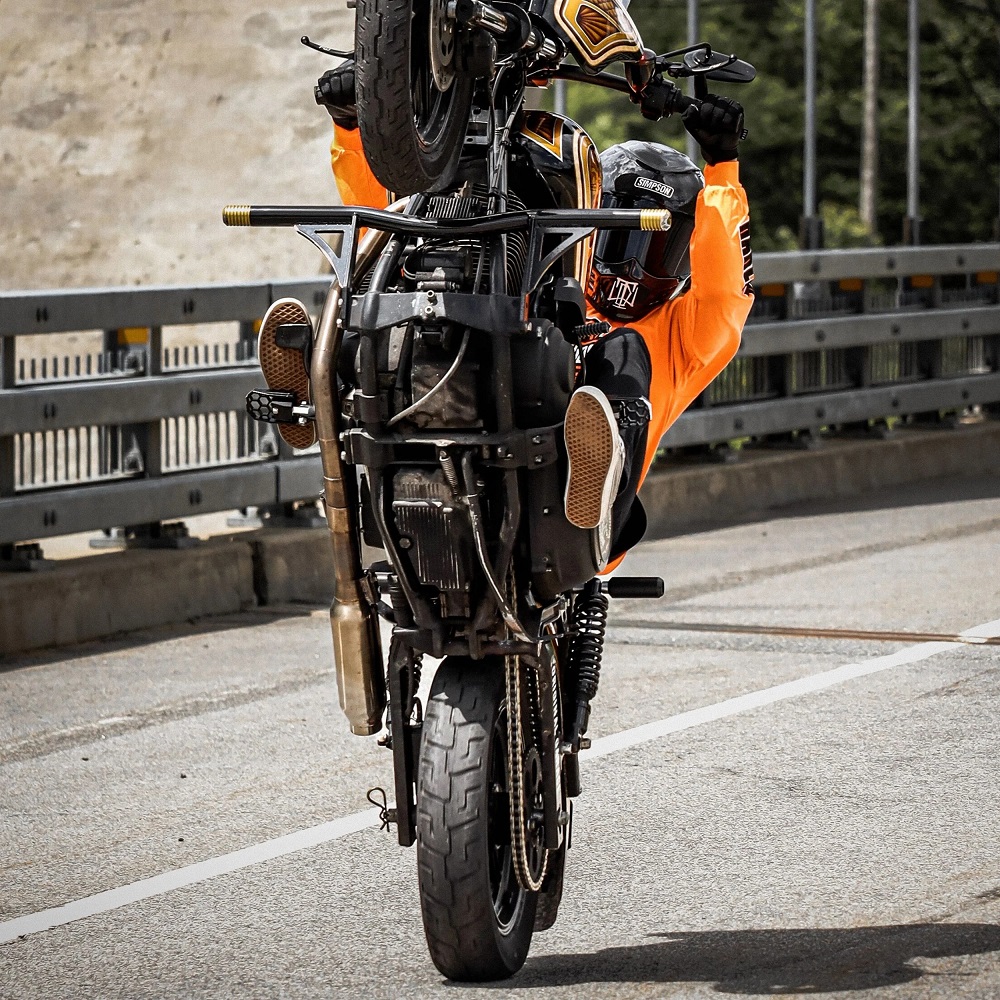
Maintenance and Care for Motorcycle Crash Bars
Proper maintenance of motorcycle crash bars ensures their durability and effectiveness. Follow these tips to keep them in excellent condition:
1. Regular Cleaning
- Clean the crash bars with mild soap and water after each ride.
- Use a soft cloth or sponge to remove dirt and debris.
- Dry the bars thoroughly to prevent moisture buildup and rust.
2. Inspect for Damage
- Check the bars for dents, cracks, or deformations after any accident or fall.
- Look for signs of rust or wear regularly.
- Tighten any loose bolts or screws immediately.
3. Rust Prevention
- Apply a rustproof coating or anti-corrosion spray as needed.
- For stainless steel bars, use polish to maintain their shine and rust resistance.
- If your bars are made of mild steel, ensure the protective paint or coating is intact.
4. Routine Lubrication
- Lubricate bolts and fasteners to prevent rust and ensure smooth installation or removal.
- Use a non-corrosive lubricant compatible with crash bar materials.
5. Repair or Replace When Necessary
- Replace crash bars with significant damage or worn-out parts without delay.
- Consider professional repairs if damage can be fixed without compromising safety.
6. Protect Against Weather Exposure
- Store your motorcycle in a covered area or use a waterproof cover.
- Avoid prolonged exposure to rain or snow when the bike is parked.
7. Review Fasteners Regularly
- Check the tightness of fastening points periodically.
- Ensure all bolts and screws are secure and undamaged.
8. Prevent Overloading the Crash Bars
- Avoid exceeding weight limits if mounting accessories.
- Distribute weight evenly when attaching items like bags or lights.
Taking good care of your motorcycle crash bars extends their lifespan and optimizes their protective function. Make maintenance a regular routine to enjoy safer and more reliable rides.
Frequently Asked Questions About Crash Bars
1. What are motorcycle crash bars used for?
Motorcycle crash bars protect the bike and rider in case of falls or accidents. They shield critical parts like the engine and prevent the motorcycle from lying flat on the ground. This reduces damage and ensures rider safety.
2. Do I really need crash bars on my motorcycle?
If you’re concerned about safety or expensive repairs, crash bars are essential. They are especially useful for adventure riders and beginners or in conditions where tip-overs are more likely.
3. Can crash bars protect the rider’s legs?
Yes, crash bars prevent the heavy motorcycle from trapping the rider’s legs during a fall. This protection greatly reduces the risk of leg injuries.
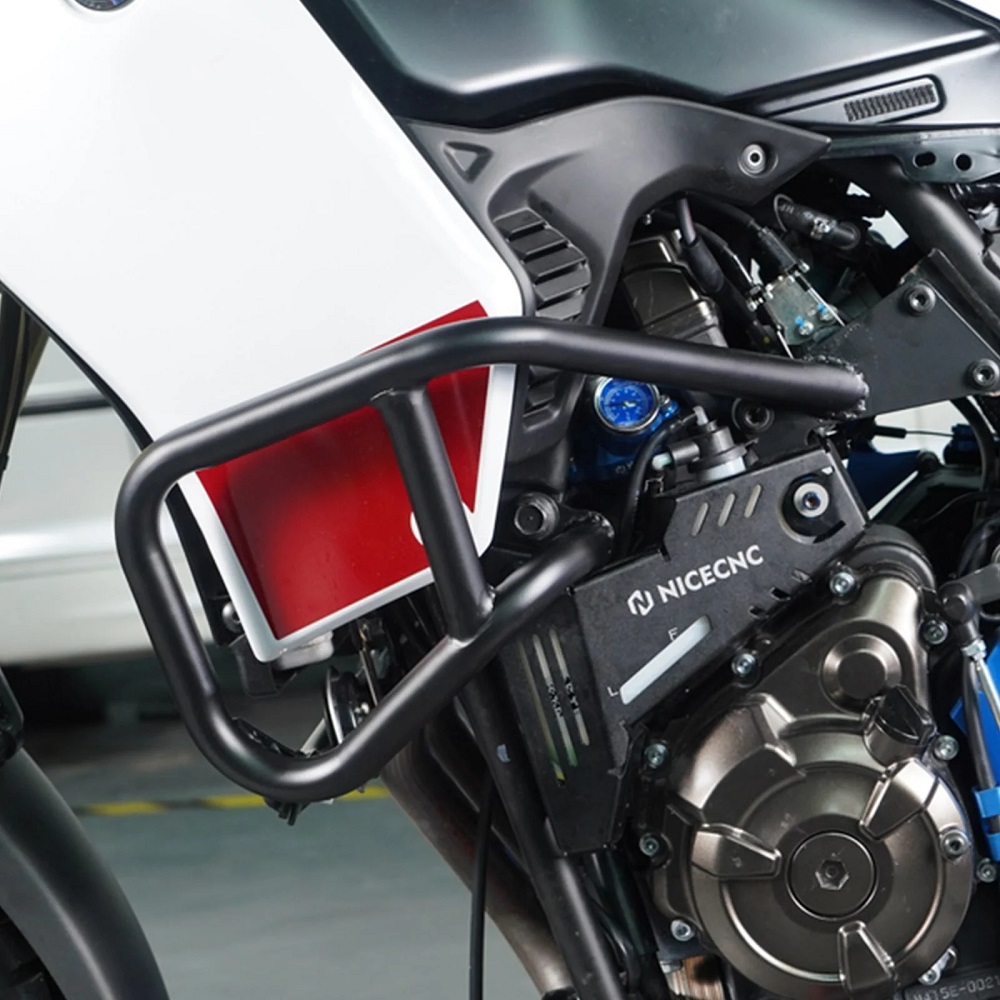
4. Do crash bars affect motorcycle handling?
Most quality crash bars are designed to maintain the bike’s balance. Lightweight materials like aluminum or titanium are less likely to impact handling significantly.
5. Do crash bars fit all motorcycles?
No, crash bars are often designed for specific motorcycle models. Check compatibility before purchasing to ensure a proper fit.
6. What material is best for crash bars?
Stainless steel and chromoly are highly durable and rust-resistant options. Aluminum is lightweight but less strong, while titanium offers the best strength-to-weight ratio.
7. Can I install crash bars on my own?
Yes, most crash bars come with instructions and are simple to install using basic tools. If in doubt, consult a professional mechanic.
8. Do crash bars require maintenance?
Yes, clean them regularly to prevent rust or debris buildup. Check bolts and connections for wear and tear. Reapply rust-proof coatings or polish as needed.
9. Are there different types of crash bars?
Yes, there are various types, such as standard, adventure, full wraparound, highway, custom, and skid plate-integrated crash bars. Each type serves specific purposes and suits different riding styles.
10. How much do motorcycle crash bars cost?
Prices vary based on design and materials. Basic crash bars are usually less expensive, while high-end materials like titanium may cost more.
11. Do crash bars work in all accidents?
Crash bars provide protection during tip-overs, low-speed crashes, and minor accidents. However, severe crashes may exceed their protective capability.
12. Can I use crash bars to mount accessories?
Yes, many crash bars offer mounting points for auxiliary lights, toolboxes, or additional storage options. This is particularly handy for adventure riders.
13. Do crash bars look good on motorcycles?
Crash bars can enhance your bike’s look by adding a rugged or adventurous appearance. Choose a design that complements your bike’s style.
14. Will crash bars increase my bike’s value?
Yes, well-installed and maintained crash bars can increase the resale value of your motorcycle. It shows that the bike has been well cared for and protected against damage.
By understanding these common questions about motorcycle crash bars, you’ll better appreciate their benefits and decide if they’re right for your bike.
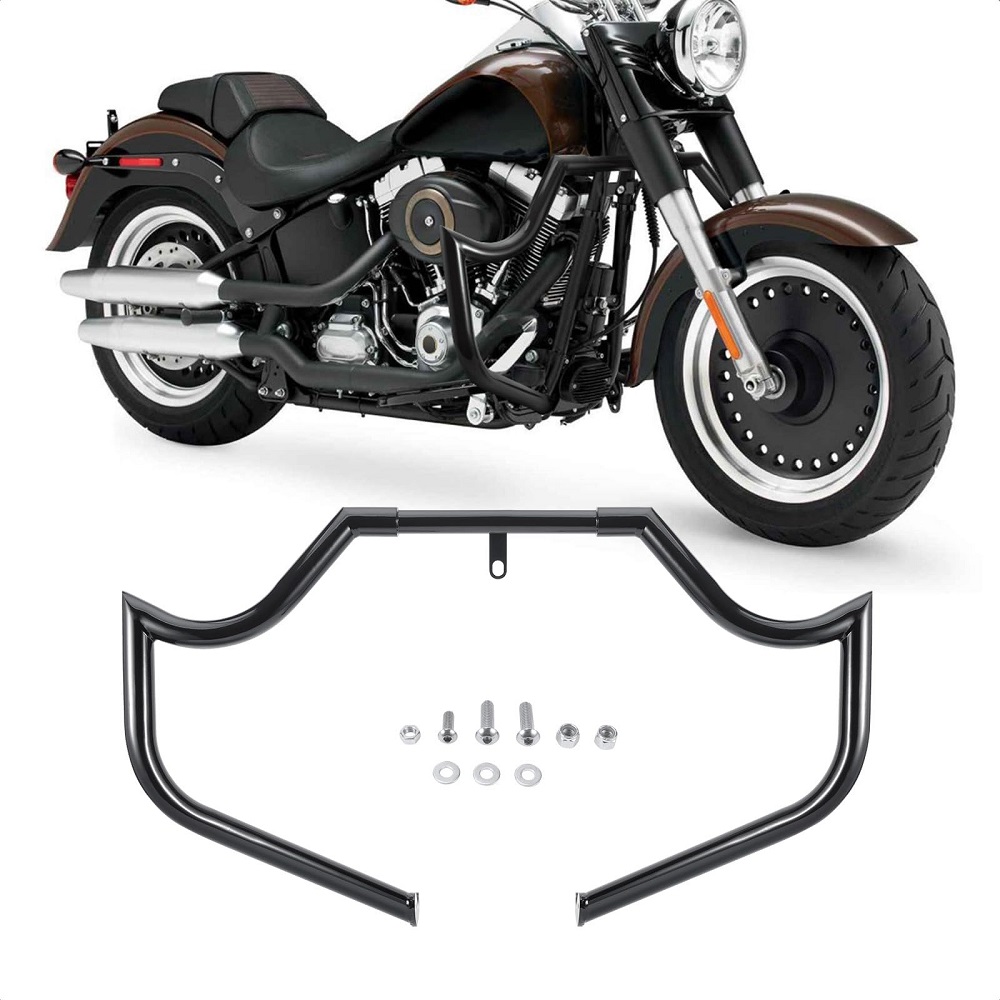
Leave a Reply